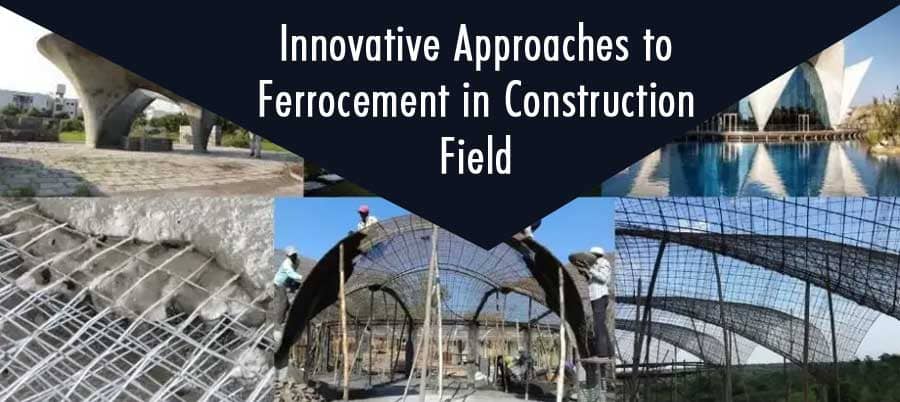Innovative Approaches to Ferrocement in Construction Field

Introduction
In the fast-paced world of construction, innovation is the key to success. One such innovation that has gained significant traction is the use of ferrocement. This versatile material offers numerous advantages over traditional construction methods, making it a popular choice for builders worldwide.
Understanding Ferrocement
Ferrocement is a composite material made of a thin layer of cement mortar reinforced with layers of small diameter wire mesh. This combination results in a strong and durable material that can be molded into various shapes and sizes. The use of ferrocement in construction offers several advantages, including high tensile strength, crack resistance, and excellent durability.
Reinventing Construction with Ferrocement
1. Structural Applications
Ferrocement has proven to be highly effective in structural applications. Its exceptional strength-to-weight ratio allows for the construction of slender and lightweight structures without compromising on durability. From residential buildings to bridges and water tanks, ferrocement offers a cost-effective alternative that ensures long-term structural integrity.
2. Sustainable Construction
In recent years, sustainable construction practices have gained immense importance. Ferrocement aligns perfectly with this goal as it requires fewer raw materials compared to conventional construction methods. Its low carbon footprint and energy-efficient production make it an environmentally friendly choice for builders.
3. Versatile Design Possibilities
One of the most appealing aspects of ferrocement is its versatility in design. The material can be easily molded into complex shapes, enabling architects and designers to explore creative possibilities. From curved surfaces to intricate patterns, ferrocement offers limitless design options, making it a preferred choice for those seeking aesthetically pleasing structures.
4. Enhanced Durability
Durability is a crucial factor in construction, and ferrocement excels in this area. Its inherent crack resistance and ability to withstand environmental stresses such as earthquakes and corrosion make it a reliable choice for long-lasting structures. By choosing ferrocement, builders can ensure their projects stand the test of time.
5. Cost-Effectiveness
Construction projects often face budget constraints, and finding cost-effective solutions is paramount. Ferrocement proves to be an excellent choice in this regard. With reduced material requirements and shorter construction times, builders can significantly cut down costs without compromising quality. This advantage makes ferrocement an attractive option for both large-scale developments and individual homeowners.
Conclusion
The construction industry is constantly evolving, and embracing innovative approaches is crucial for staying ahead. Ferrocement, with its remarkable properties and versatile applications, offers a game-changing solution for builders. From its structural advantages to its sustainability and cost-effectiveness, ferrocement has proven its worth in the construction field.
To leverage the full potential of ferrocement, it is essential for industry professionals to stay informed about the latest advancements and techniques. By adopting innovative approaches and exploring the boundless possibilities of this remarkable material, construction projects can reach new heights of success.
